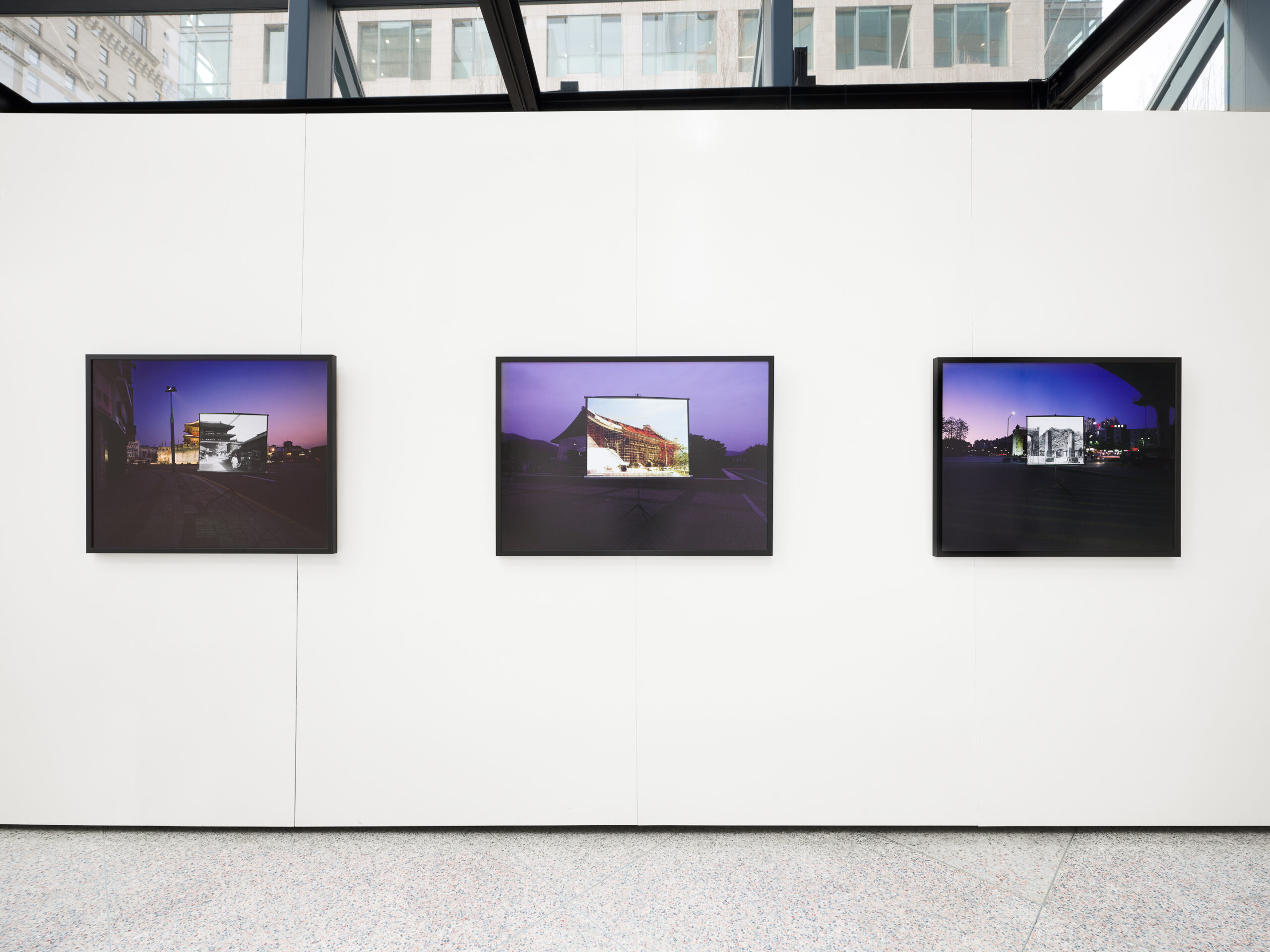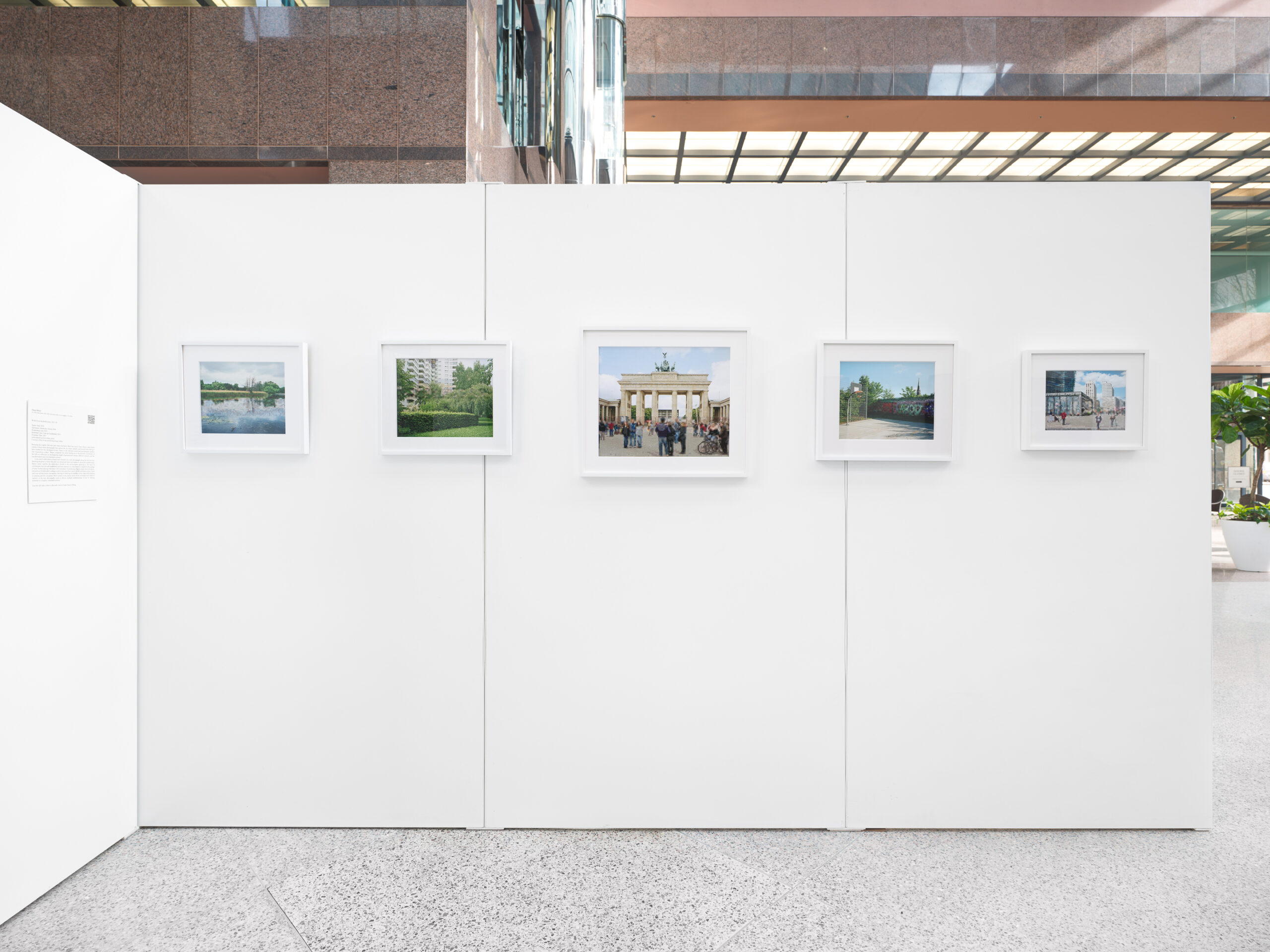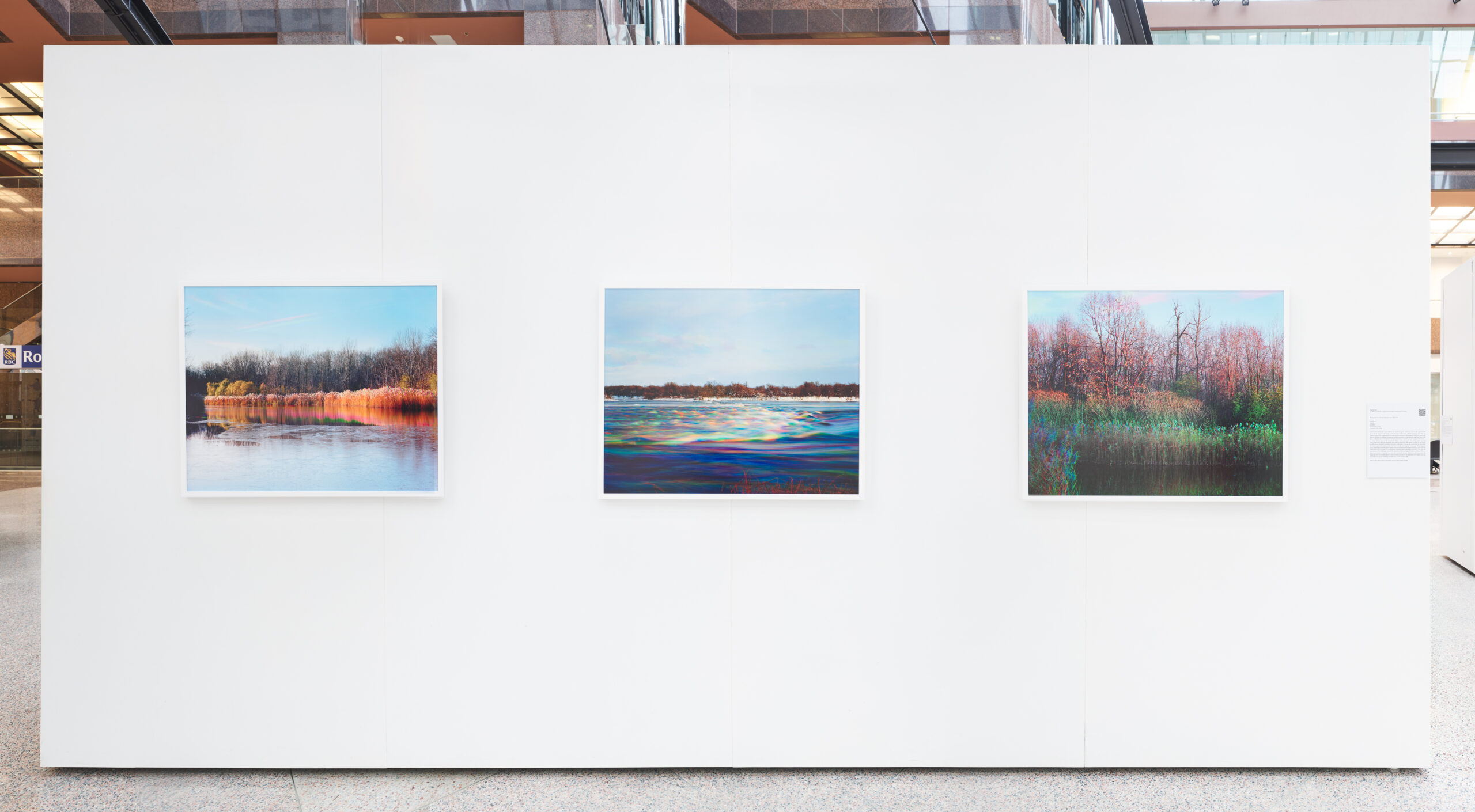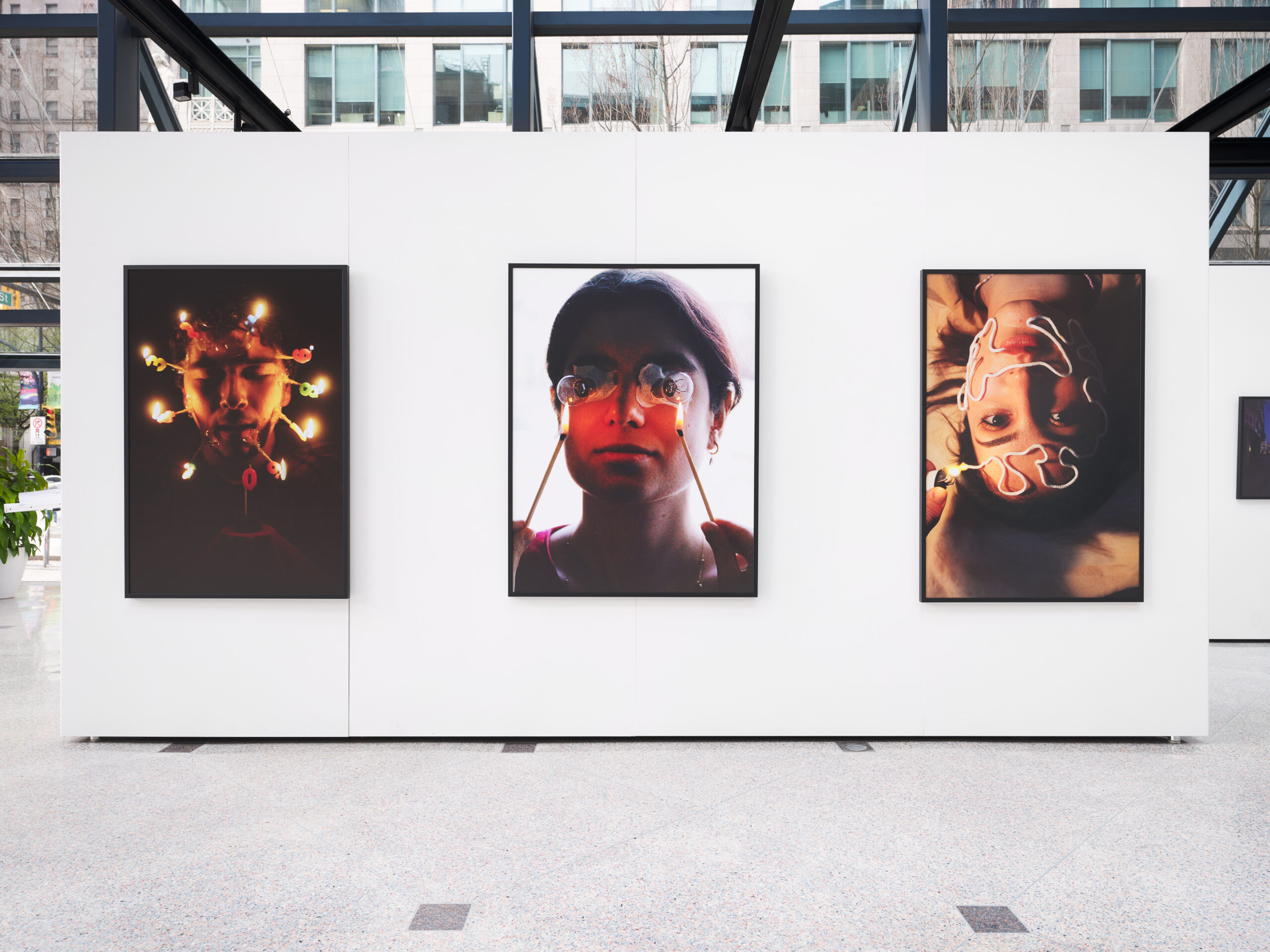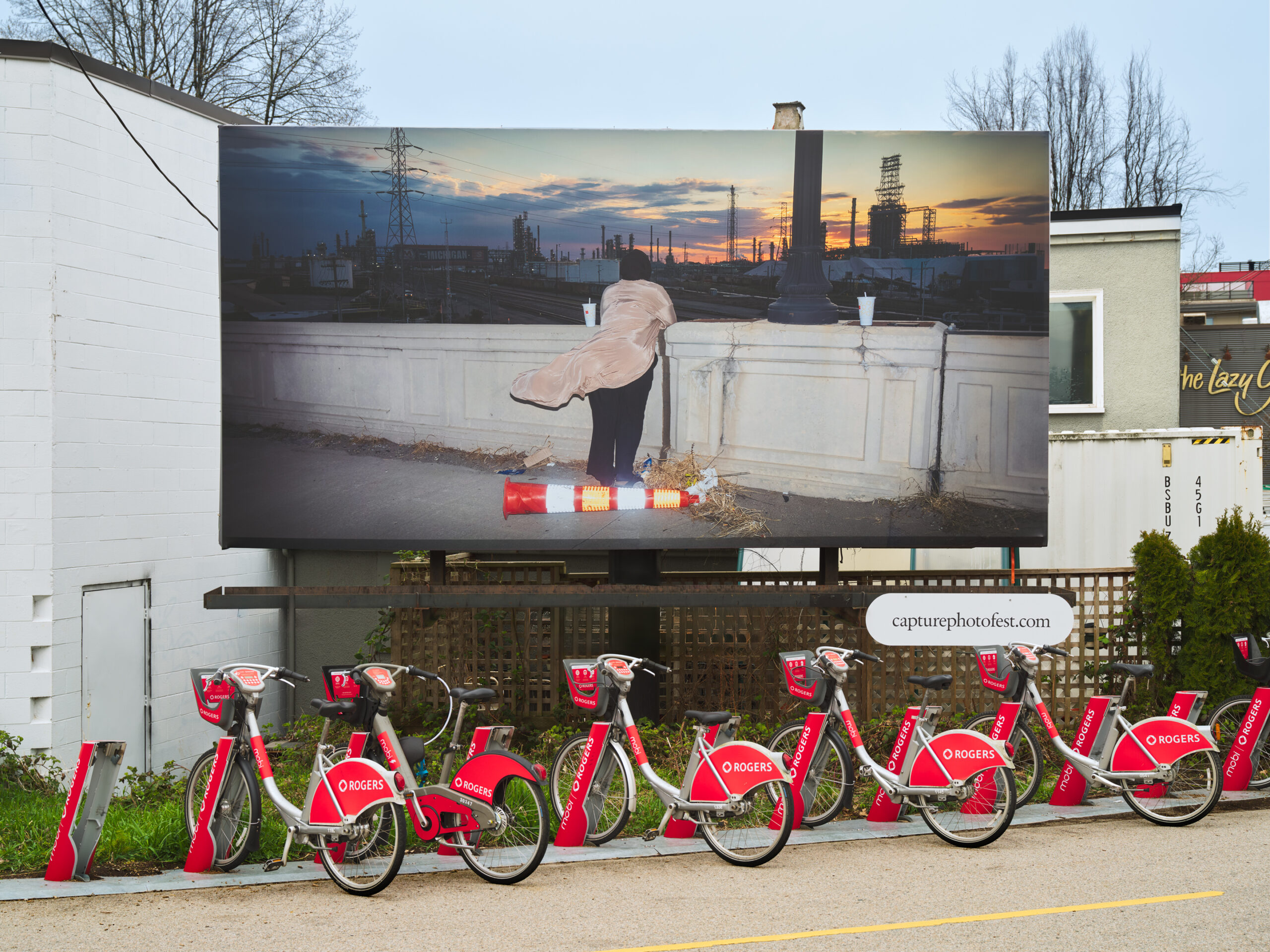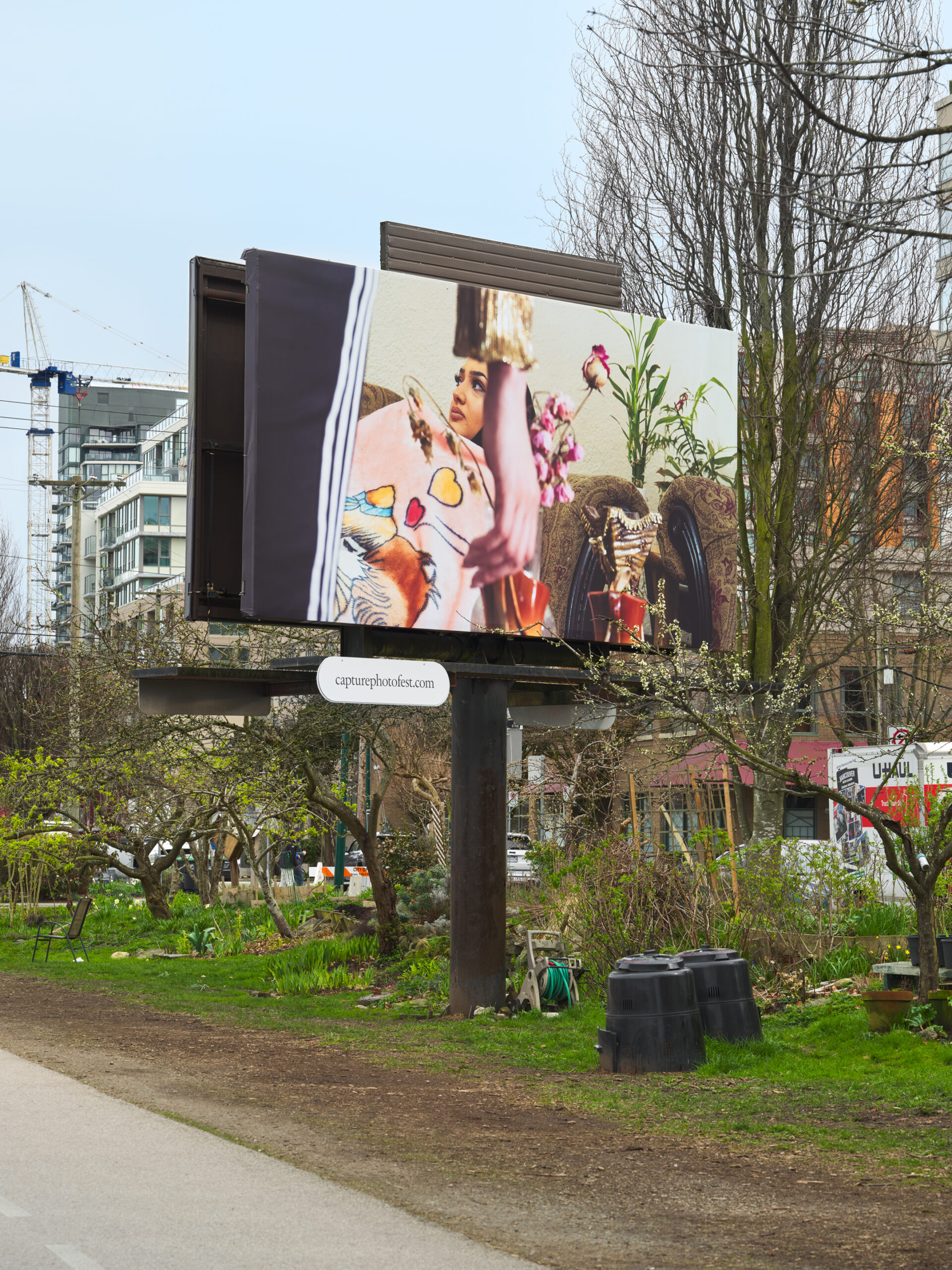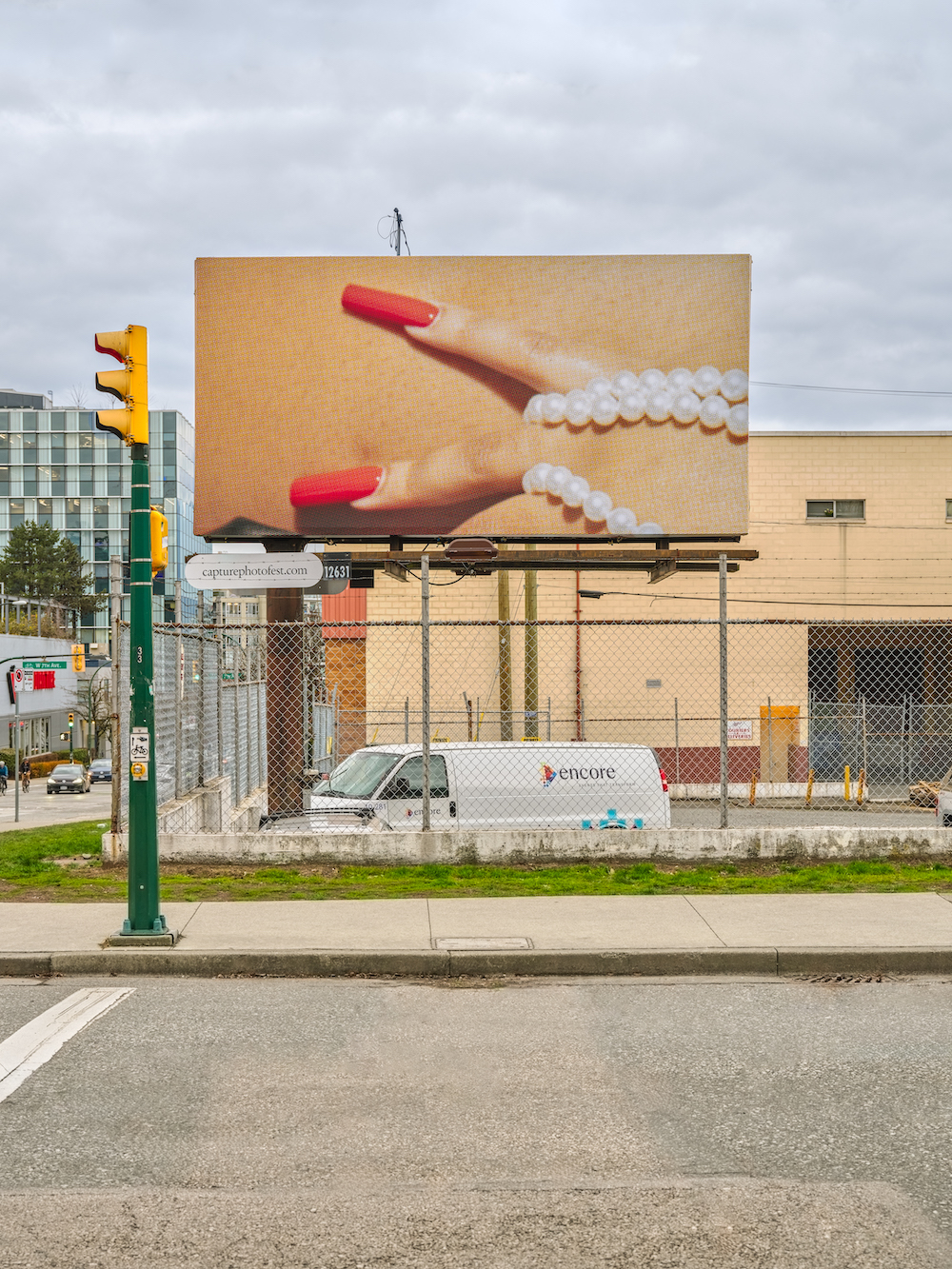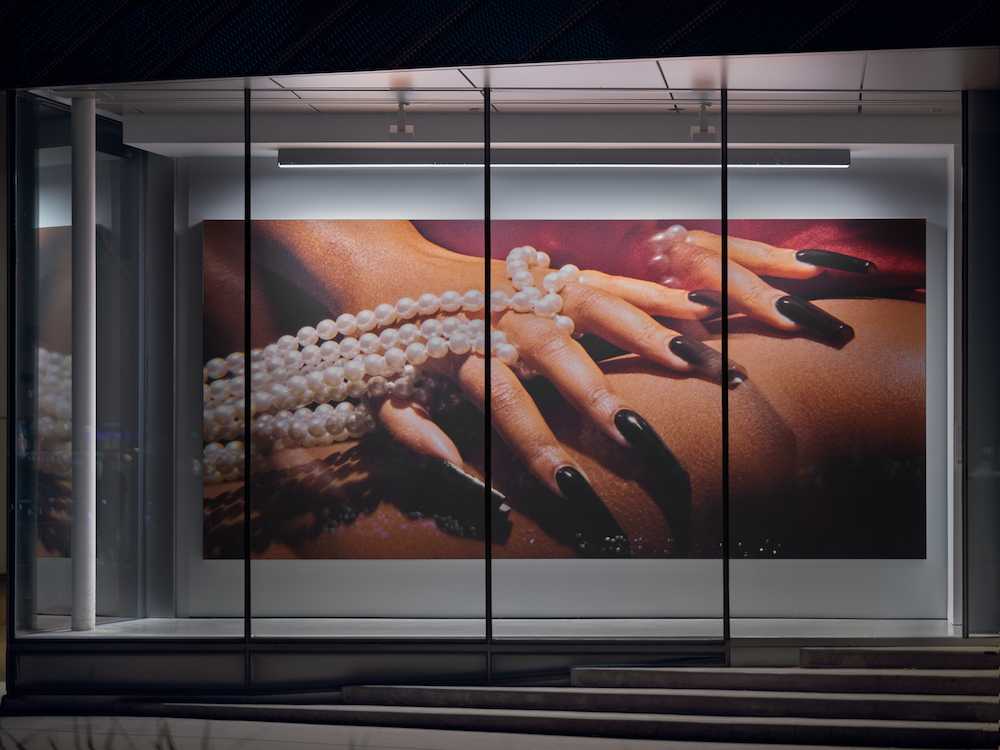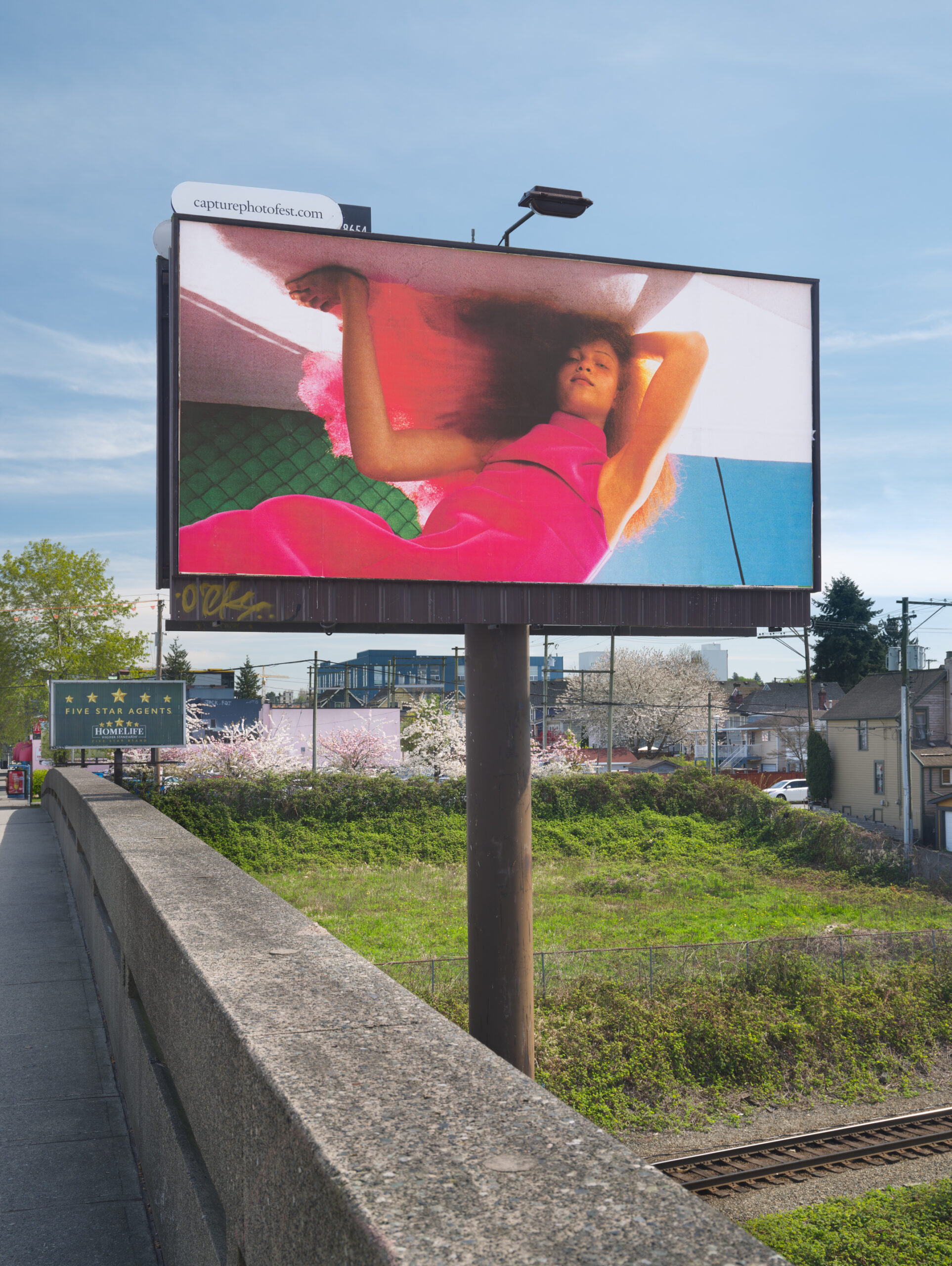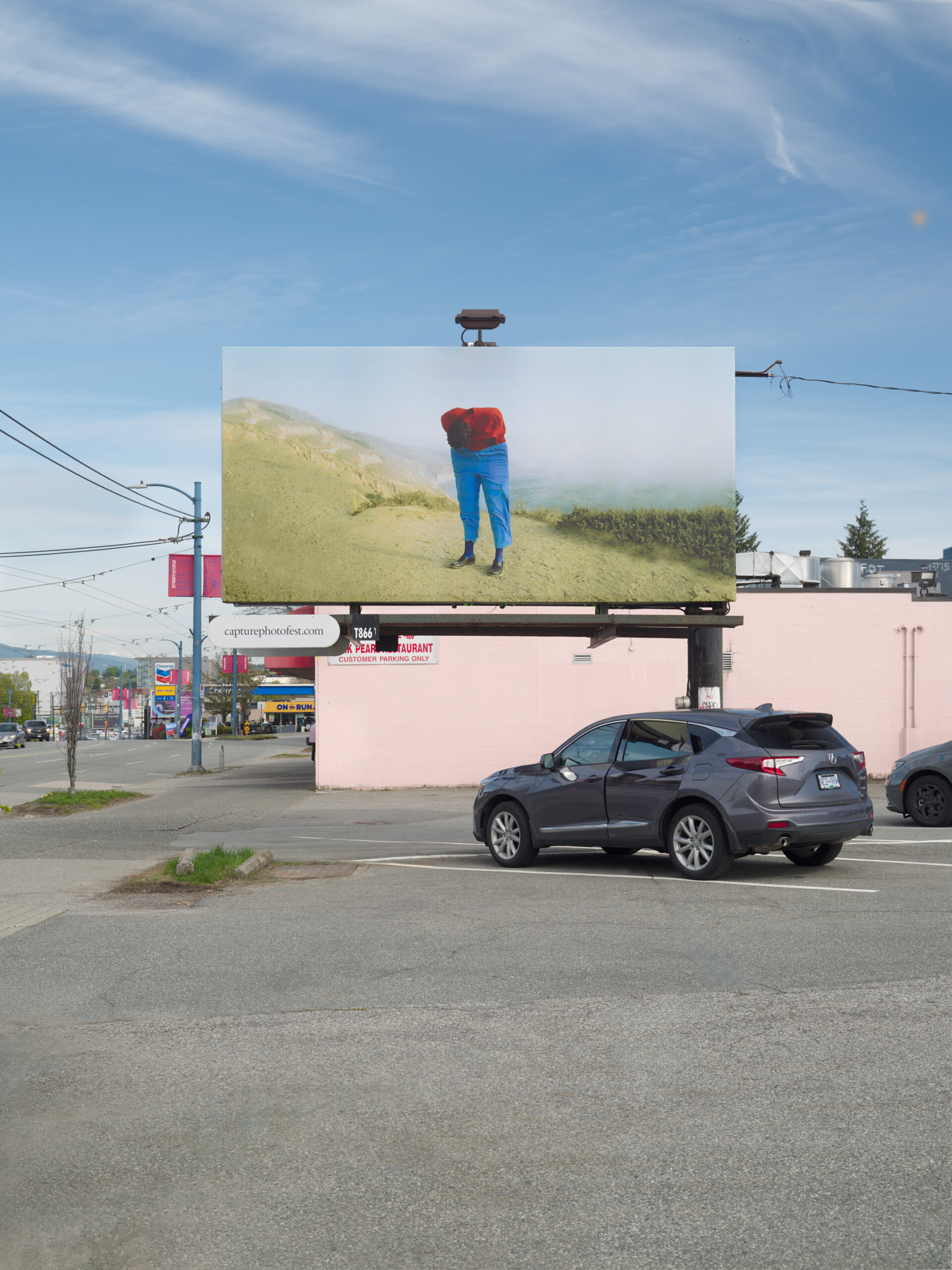[June 19, 2024]
Capture Photography Festival
Various sites, Vancouver
01.04.2024 – 30.04.2024
By Karen Henry
The Capture Photography Festival is an annual invitation to meander through the many and diverse expressions that fall under the rubric of photography (so-called). The alignment of programs from larger and smaller institutions to commissions for public sites, from exhibitions of student work to those by national and international artists, results in a celebration of image culture for those who wish to explore it. Here, I focus on the Capture-curated exhibition and public works, but there is much more to see.
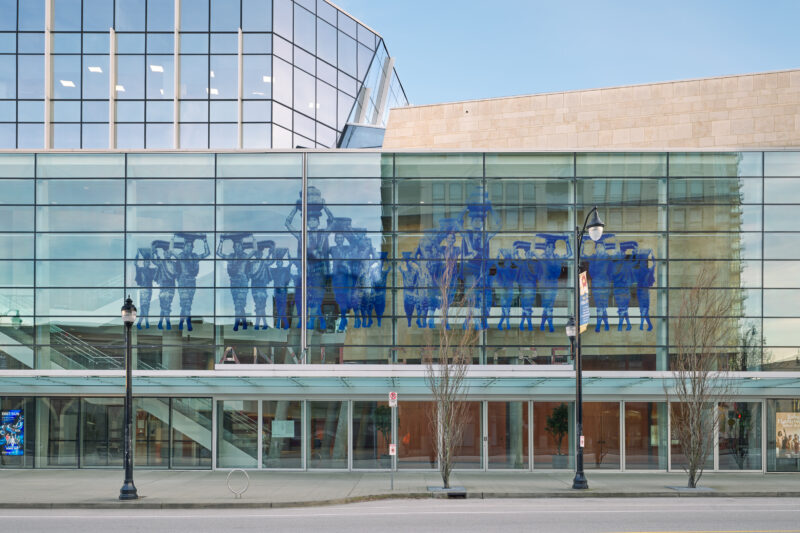
Karen Zalamea, Ensemble, 2024, photo: Dennis Ha
Karen Zalamea’s public work Ensemble is installed for a year on the façade of the Anvil Centre (which houses the New Westminster archives), just outside the New Westminster SkyTrain station. The original image is from a 1986 issue of the Vancouver daily The Province and portrays dancers from the Philippines performing at Expo 86. Zalamea used this as a starting point to explore the relationship between the Filipino community of New Westminster and its official sister city, Quezon City in the Philippines. Zalamea wanted to pay tribute to the Filipino community in the area by reimagining, reprocessing, and remounting the image. She first removed the background from the image then digitally doubled it, flipping the copy to create the symmetrical formation; she then printed it as a negative transparency, which she used to make a cyanotype – an image created by sunlight and water, which are intrinsic both to life and to the connection between the two cities. The characteristically blue image was then scanned and enlarged to produce this elegant public artwork.
On Time was the exhibition curated for Capture by Emmy Lee Wall, Chelsea Yuill, and Jeff Hamada. The trope of representing time with lens-based media seems quaint at this point. The title could also connote a sense of urgency, as in the rush to be on time; however, the works in this show were quite slow in their processes. They were brought together for their sense of duration – existing over time, not just in the moment. I was particularly drawn to the works in which the technique itself was informed by time, including the use of older and newer technologies. In Historic Present (2008–12), South Korean artist Sungseok Ahn takes the art of superimposing images to an analog extreme; setting up a screen at historic cultural sites, he projects an archival image that is superimposed on and aligned photographically with the contemporary architecture. The photographs, taken at night, hold the space for memories of the Korean War and Japanese colonial rule that shaped the city of Seoul.
Pendarvis Harshaw and Brandon Tauszik’s portraits of people recently released from prison and adjusting to life outside are simple but hold within them the dramatic stories of life interrupted. As highly accomplished cinemagraphs (a hybrid of video and still photography; you will know the pedestrian version as the “live” setting on your iPhone photos), the works emphasize that life is active and changing. The images are looped, extending time but also infusing it with repetition, patience, and vulnerability. Diane Meyer’s beautifully cross-stitched scenes of Berlin offer a dimension of materiality to the passage of time while also contemplating a particular history by revisiting sites informed by the fall of the Berlin Wall. Aaron Leon’s experiments with colour and light foreground the technical elements of photography onto the beauty of landscape. Using a film camera and multiple exposures, he references histories of painting and abstraction and the photography of an earlier era, and he excites the representation of the land.
At the north end of the Arbutus Greenway, a walking and biking path on the west side of the city, a series of six billboards displayed photographs by Arab-American photographer Farah Al Qasimi from her exploration of the large Arab American population in Dearborn, Michigan, home of the Ford Motor Company. The billboards place these scenes above the garden beds along the greenway. The lives of women are strongly represented here, from what looks like a woman clad in a black burqa contemplating the water on Fordson Island, to a domestic scene showing a young woman curled up in a pink blanket, with a manicured hand in a gold lamé sleeve in the foreground. I was intrigued by the picture of a colourful young person whose gender identity is somewhat ambiguous, striding in front of a large painted car advertisement. The tie-dyed pants, yellow jacket, and green shoes contrast with the black headscarf jauntily trailing in the wind over the figure’s shoulder. Al Qasimi’s photos are a significant contribution to the representation of vital Arab American culture and particularly revealing of the lives of women.
There is traditionally a large signature image for Capture on the Dal Grauer hydro station in the busy downtown core, but this year the proposal, by Karice Mitchell, was rejected outright by BC Hydro. Capture made the most of this by offering Mitchell a series of billboards at four locations, plus the original commissioned image installed at the Polygon Gallery in North Vancouver. The billboards offer various degrees of detail and abstraction from the original image, which draws on a legacy of Black erotic publications. Mitchell highlights traditional adornments, such as pearls, satin, and long fingernails, that offer – but also frustrate – titillation and reclaim feminine (en femme) sensuality without giving up agency. Mitchell sees the affirmation of sensuality as a “proclamation of space.” “For me, the Black female body is a subject that needs to be strategically negotiated in response to the ways in which capitalism, patriarchy, and White supremacy have exploited it,” she writes in the festival catalogue. “I see these histories as a foundation into which Black women, like myself, must intervene.”
Black women’s bodies were also represented in the photographs by Arielle Bobb-Willis on the East Hastings billboards, but here they were absorbed into the colour and staging of fashion photography. In these quirky and brilliantly colourful images, titled Furiously Happy, it’s the colour and the pose that define the models. In contrast, Caroline Monnet’s images of Indigenous women were also informed by fashion, with costumes accumulated from second-hand stores or constructed sculpturally from non-traditional materials, evoking histories and futurist fantasies as well as working lives. In these images, which will be shown consecutively over the next year on the GreyChurch Billboard, the women command the attention and take up the urban space with their lives and their activist potential.
Capture has grown and matured since its start in 2013. The festival exhibitions, enhanced by commissioned writings and artists talks, a comprehensive website, and a print catalogue, make for an expansive and stimulating annual festival of imagery informed by the traditions of photography, no matter what you call it.
Karen Henry is a writer and independent curator in Vancouver.

